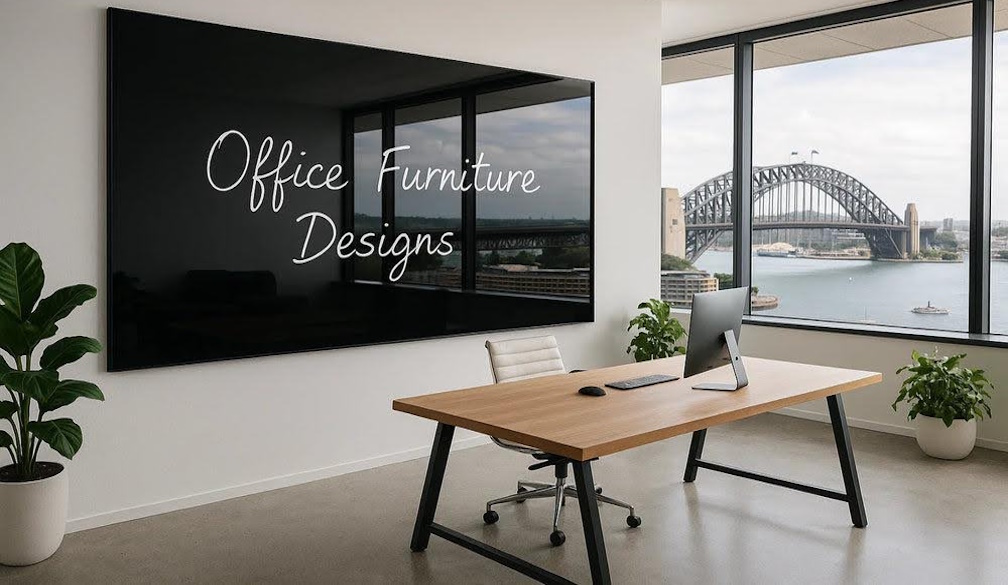Beyond the Marker: How Modern Whiteboards Drive Team Collaboration

Collaboration in the workplace has undergone a transformation. With the rise of hybrid work models, agile project management, and a renewed focus on team synergy, the tools that enable effective communication are more important than ever. Among the most enduring—and evolving—of these tools is the whiteboard.
No longer confined to classroom walls or static meeting rooms, whiteboards have found new life in contemporary offices and government environments. From glass boards that double as design features to mobile setups that can be wheeled into action wherever creativity strikes, today’s boards are essential for fluid collaboration.
The Return of Visual Thinking
In our screen-saturated world, visual tools that exist off-screen provide a welcome shift. Whiteboards offer a tactile, highly visible means of expressing ideas, aligning strategies, and resolving complex problems in real-time.
This mode of working supports visual learners and encourages spontaneous input. When combined with agile or lean methodologies, visual boards allow teams to quickly map sprints, chart timelines, and identify bottlenecks. They also improve memory retention, as physically writing and seeing content activates cognitive processing more deeply than passive listening or screen reading alone.
Why Glass Boards Are Rising in Popularity
One of the clearest trends in modern workspaces is the move toward glass boards. These frameless, glossy surfaces bring a minimalist edge to any environment, pairing functionality with sleek design. Unlike traditional whiteboards, they resist ghosting, are easier to clean, and maintain their clarity even after years of use.
For design-conscious offices or executive spaces, glass boards for agile workspaces offer a solution that performs without compromising on aesthetics. They can be custom coloured to match branding or thematic zones, and when wall-mounted, they appear almost architectural in effect.
Mobility and Flexibility for Modern Teams
In agile and hybrid environments, mobility is everything. Whiteboards on wheels enable teams to take their ideas with them—across rooms, departments, or buildings. They're perfect for fast-moving projects, workshops, and sessions that demand constant evolution.
With dual-sided surfaces and magnetic accessories, mobile collaboration boards serve both structured and freeform ideation. Whether you're mapping out strategic roadmaps in a council briefing or sketching creative flows during a product sprint, these boards are practical assets that adapt to the moment.
Hybrid Collaboration: Bridging the Physical and Digital
As hybrid work continues to define Australian business culture, whiteboards play a crucial role in connecting in-person and remote contributors. When used in tandem with video conferencing and whiteboarding apps, they become shared anchors in mixed-presence meetings.
Staff can capture a board’s contents digitally and distribute it to remote team members, ensuring that no contribution is lost and no participant is left behind. This blend of analogue and digital fosters clarity and continuity—two essentials in today’s dispersed workforce.
Use Across Sectors: More Than Just Corporate Tools
Although often associated with startups and corporate strategy, whiteboards and glass boards have widespread utility across other sectors:
In Government: Policy planning sessions, stakeholder engagement workshops, and operational reviews benefit from visual tools. Boards allow departments to map interdependencies, track deliverables, and create shared understanding quickly.
In Education: Universities and training centres use glass boards for interactive learning. Unlike traditional whiteboards, they maintain clarity over time and are suited for both teaching and collaborative research.
In Professional Services: From architectural studios to legal chambers, glass boards serve both as a thinking space and a visual centrepiece. Their appearance enhances credibility while supporting functionality.
Considerations for Selecting the Right Board
Choosing the best board depends on a variety of factors:
Usage Frequency: For daily use, durability and cleanability are key. Glass surfaces provide long-term clarity with minimal upkeep.
Space Availability: Smaller rooms may benefit from wall-mounted boards, while large open offices can accommodate mobile units for more dynamic collaboration.
Design Integration: Consider how colour, finish, and form factor align with your broader office aesthetic or organisational branding.
Functional Extras: Magnetic functionality, pen trays, flip-chart arms, or even projector compatibility can add value for specific use cases.
Future-Proofing Through Versatility
As businesses and institutions continue to adapt to change, investing in tools that support adaptability is paramount. Whiteboards and glass boards offer this flexibility. They're tech-independent, durable, and always ready to serve wherever strategy and creativity converge.
Moreover, in an age where sustainability is a growing consideration, long-life products like glass boards support a more responsible approach to fit-outs. Their longevity and low maintenance requirements reduce replacement cycles and waste.
Final Thoughts: Clear Surfaces, Clear Thinking
While digital innovation often dominates headlines, sometimes the most effective solutions are refreshingly simple. The whiteboard is one such solution. It continues to evolve, proving its relevance by blending tactile engagement with sleek, professional form.
For teams navigating complexity, presenting to stakeholders, or brainstorming the next big idea, a clean board and a few good markers may be the most powerful tools at their disposal.
ols at their disposal.











